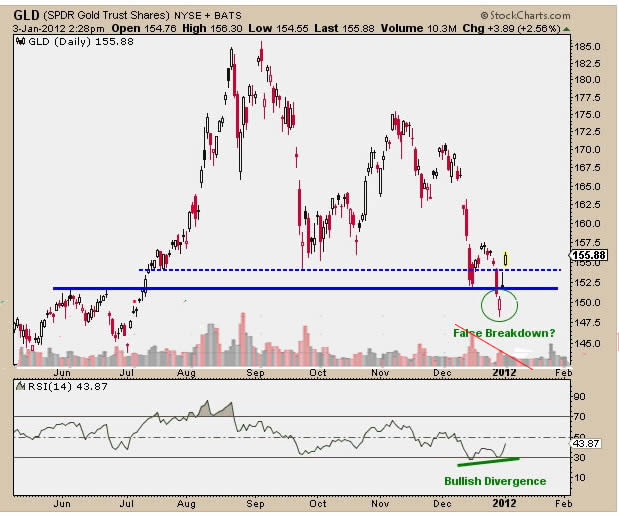6 December 2012Introduction
Olam was attacked by Muddy Waters who has a “strong sell” rating because Olam has accumulated debts (current and long term) of over SGD$8.0 bil. Olam counteracted the attack by raising more fund with the backing of Temasek, who has 16% share in the company.
Olam’s stock price dropped from a high of about SGD$2.00 in Oct 2012 to the present level of SGD$ 1.45. Olam was expected to
form a bear flag but today’s trading showed otherwise. It went below yesterday's close with lesser trading volume. Is there a false breakdown in Olam’s trading?
What is a False Breakdown?
A false breakout or breakdown is usually referring to stock price that wanders out of a range, making temporary price movement up or down but soon returns back to its original position. This usually happens when stock breaks a support or resistance lines without any support of trading volume to sustain the move.
One example is as follows
Why?
In the case of a false breakdown, the shortists either run out of fund or not aware of prevailing news. They continue shorting the stock until the price started to show “exhaustion” without much support from the other shortists. When that happens, the bulls will enter the market forcing the shortists to cover their shorts. The same will happen when there is a false breakout except it is in reverse.
Example?
Olam has a living example. In May 2012, Olam’s 3rd Quarter profit ending March 2012 dropped 23%. The market took it for spin. Olam’s share price dropped about 30% from about SGD$2.30 to SGD$1.60. Unknown to many, Olam’s June report showed an operation profit of SGD$350 mil which is only 4% less than that of 2011. The stock recovered much of its losses to end at about SGD$2.10 in August.
Olam started out with a bear flag having a target of around SGD$1.70. When the target was reached, the shortists continued shorting the price down to SGD$1.61 with 2 false breakdowns; one on 24 May and the other on 1 June. Unfortunately, there were no volume support for both breakdowns. Olam soon recovered when there was a price exhaustion, creating a candlestick gap followed by a bullish engulfing candlestick reversal pattern. The shortists were forced to take cover after that.
What Happened Today?
With an unsuccessful attempt to push the stock price to below the last low of SGD$1.50 yesterday, the shortists made another attempt today. This time, they managed to push the price to close at SGD$1.45; unfortunately, there was no volume support again or volume was lower than the last 2 sessions.
Is it really a False Breakdown?
It is a false breakdown according to the text book. However, unlike the one in May 2012, this breakdown occurs after having broken down the long time support of a symmetrical triangle with a very heavy volume. The situation this time is different. It is likely if there is any recovery, it will have to test the long time support of the triangle which is now becoming the resistance.
Time to Enter the Market?
It is still pre-mature to enter the market and shore up the shares. This is because the following indicators have not shown any sign:-
a) The Average True Range (ATR) is still rising
b) The Directional Indicator ADX is just flattening out;
c) The Stochastic still hugging the oversold line and yet to recover
The price may wander down somemore with another false breakdown just like in May 2012.
What are ATR, ADX and Stochastic?
They are basic indicators that show the stock’s volatility, the momentum and the price movement respectively. ATR will rise when there are abrupt changes in the price. ADX will rise when price picks up the momentum and then accelerate. Stochastic become oversold when it goes below 25% and overbought when it goes above 75%.
How to Monitor?
Take the May 2012's price movement as an example. The ATR started flattening out and went down from mid May 2012. At the same time, ADX continued to rise until 1 June 2012 together with stochastic going on its way up soon after. When the price was about to recover, a bullish engulfing candlestick reversal pattern appeared after showing an "exhausted" candlestick gap.
Similarly, ATR, ADX and stochastic together with candlestick patterns can be used to monitor and confirm if the present breakdown is false and also when the price will recover.
After Note: One could also use Relative Strength Index (RSI) to track the stock movement. Presently, the RSI is showing a positive divergence, starting to climb up the ladder. Its performance will improve if it can climb above 30.
Disclaimer: The author has no position in Olam. Please verify the information if they are to be used for trading purposes.












































